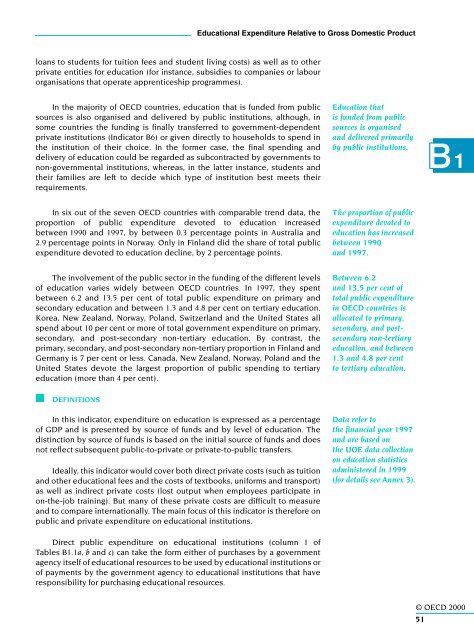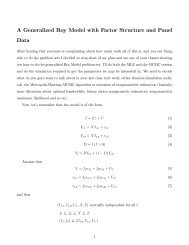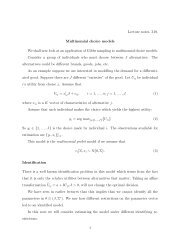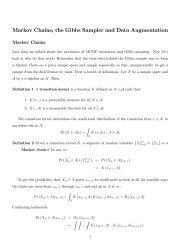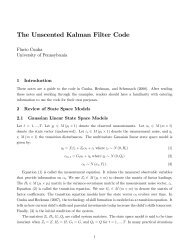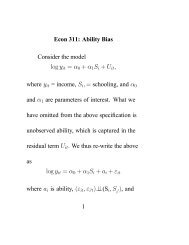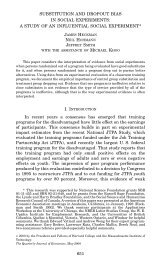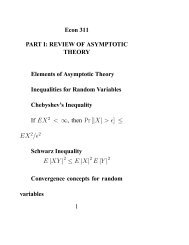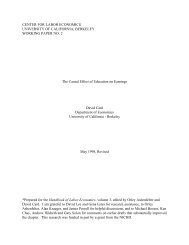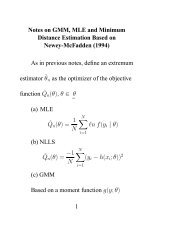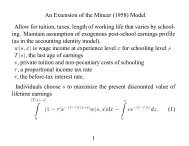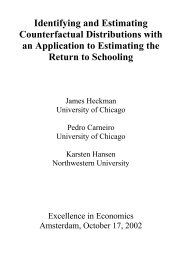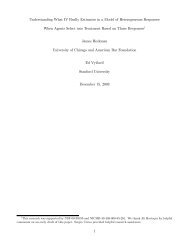OECD (2000)
OECD (2000)
OECD (2000)
Create successful ePaper yourself
Turn your PDF publications into a flip-book with our unique Google optimized e-Paper software.
Educational Expenditure Relative to Gross Domestic Product<br />
loans to students for tuition fees and student living costs) as well as to other<br />
private entities for education (for instance, subsidies to companies or labour<br />
organisations that operate apprenticeship programmes).<br />
In the majority of <strong>OECD</strong> countries, education that is funded from public<br />
sources is also organised and delivered by public institutions, although, in<br />
some countries the funding is finally transferred to government-dependent<br />
private institutions (Indicator B6) or given directly to households to spend in<br />
the institution of their choice. In the former case, the final spending and<br />
delivery of education could be regarded as subcontracted by governments to<br />
non-governmental institutions, whereas, in the latter instance, students and<br />
their families are left to decide which type of institution best meets their<br />
requirements.<br />
Education that<br />
is funded from public<br />
sources is organised<br />
and delivered primarily<br />
by public institutions.<br />
B1<br />
In six out of the seven <strong>OECD</strong> countries with comparable trend data, the<br />
proportion of public expenditure devoted to education increased<br />
between 1990 and 1997, by between 0.3 percentage points in Australia and<br />
2.9 percentage points in Norway. Only in Finland did the share of total public<br />
expenditure devoted to education decline, by 2 percentage points.<br />
The proportion of public<br />
expenditure devoted to<br />
education has increased<br />
between 1990<br />
and 1997.<br />
The involvement of the public sector in the funding of the different levels<br />
of education varies widely between <strong>OECD</strong> countries. In 1997, they spent<br />
between 6.2 and 13.5 per cent of total public expenditure on primary and<br />
secondary education and between 1.3 and 4.8 per cent on tertiary education.<br />
Korea, New Zealand, Norway, Poland, Switzerland and the United States all<br />
spend about 10 per cent or more of total government expenditure on primary,<br />
secondary, and post-secondary non-tertiary education. By contrast, the<br />
primary, secondary, and post-secondary non-tertiary proportion in Finland and<br />
Germany is 7 per cent or less. Canada, New Zealand, Norway, Poland and the<br />
United States devote the largest proportion of public spending to tertiary<br />
education (more than 4 per cent).<br />
Between 6.2<br />
and 13.5 per cent of<br />
total public expenditure<br />
in <strong>OECD</strong> countries is<br />
allocated to primary,<br />
secondary, and postsecondary<br />
non-tertiary<br />
education, and between<br />
1.3 and 4.8 per cent<br />
to tertiary education.<br />
DEFINITIONS<br />
In this indicator, expenditure on education is expressed as a percentage<br />
of GDP and is presented by source of funds and by level of education. The<br />
distinction by source of funds is based on the initial source of funds and does<br />
not reflect subsequent public-to-private or private-to-public transfers.<br />
Ideally, this indicator would cover both direct private costs (such as tuition<br />
and other educational fees and the costs of textbooks, uniforms and transport)<br />
as well as indirect private costs (lost output when employees participate in<br />
on-the-job training). But many of these private costs are difficult to measure<br />
and to compare internationally. The main focus of this indicator is therefore on<br />
public and private expenditure on educational institutions.<br />
Direct public expenditure on educational institutions (column 1 of<br />
Tables B1.1a, b and c) can take the form either of purchases by a government<br />
agency itself of educational resources to be used by educational institutions or<br />
of payments by the government agency to educational institutions that have<br />
responsibility for purchasing educational resources.<br />
Data refer to<br />
the financial year 1997<br />
and are based on<br />
the UOE data collection<br />
on education statistics<br />
administered in 1999<br />
(for details see Annex 3).<br />
© <strong>OECD</strong> <strong>2000</strong><br />
51


